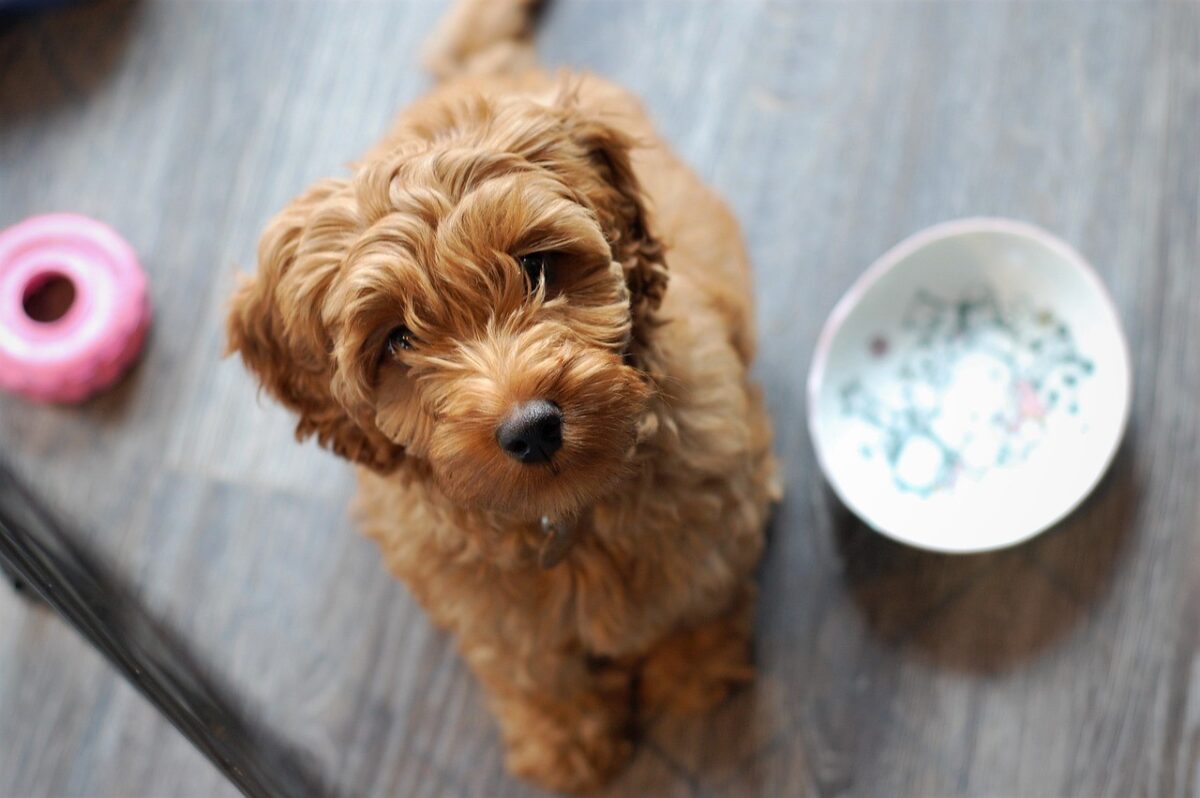Australian Labradoodle Puppies – Everything You Need To Know

It’s no secret that Labradoodles are among the most popular hybrid dog breeds in the United States. They’re sweet and playful, but when do they settle down?
Puppies, like all other animals, go through a stage of extreme activity while they are very young. By the time Australian Labradoodle Puppies are three years old, it should have settled down. Don’t worry, though; it gets better as kids become older. Moreover, the breed is intelligent and fast to pick up on right and wrong.
Let’s dive deeper into the hyperactive years and discuss what to do if your adult Doodle hasn’t outgrown his or her impulsive ways.
At What Age Do Labradoodles Become More Subdued?
Labradoodles usually approach puberty between 6 and 8 months and achieve their full adult size between 12 and 18 months. Their mental development is slower, and they may not fully develop until they are 3 years old.
By then, they have mastered keeping their energy levels under check. However, adult Doodles should keep their youthful vigor long into the old life.
Why Are My Labradoodles So Hyper?
Australian Labradoodle Puppies tend to be active and friendly dogs. They’re a cross between the obedient and playful Labrador Retriever and the clever Poodle. Some dogs, especially those with higher intelligence, require more cerebral exercise than others.
Labradoodles are very active dogs, requiring lots of playtime and walks. The exception is if your adult Doodle is excessively hyperactive and may suffer from a lack of stimulation and/or exercise. The result may be excess activity and agitation from pent-up vigor. Behaviors include pacing, panting, incessant barking, and destruction of personal and household belongings are common signs of anxiety and destructiveness.
The Value Of Interacting With Others For Labradoodles
All dogs, but especially friendly breeds like Labradoodles, benefit greatly from early and consistent socialization. Not only is it crucial to their health, but it will also keep them mentally and physically active for a good chunk of the day.
You should socialize your dog as much as possible with other people and dogs and include him or her in as many family activities as possible.
Puppyhood is the optimum time to begin socializing your Australian Labradoodle Puppies, and it is best to begin at home, where your dog can learn the rules in a stress-free setting. Because of this, less fighting and snapping will occur during those times of heightened agitation.
Before you bring your new puppy home, he or she should have already begun some socialization and exposure at the breeders.
Tips For Calming A Hyperactive Labradoodle
The best way to handle hyperactivity in your Labradoodle is to maintain your composure and be firm with your dog. Don’t snap or yell; doing so could make your dog more anxious and damage your relationship with him.
Crossing your arms and avoiding eye contact with your misbehaving dog is the best method to handle the situation. Once they’ve settled down, it’s important to praise them for being quiet, so they know this is the kind of behavior you’re looking for.
You could try a relaxing herbal supplement or a plug-in diffuser if you suspect that anxiety is the underlying cause of your Doodle’s high hyperactivity. Naturally calming substances like CBD and lavender reduce anxiety and calm the mind. Collars and bedding with relaxing fragrances can also help pets feel safe and secure.
Labradoodles have a high drive to chew and might become overly active if their energy isn’t channeled properly.
How Frequent Is It For Labradoodles To Suffer From Separation Anxiety?
Australian Labradoodle Puppies breed, especially those hyperactive, may suffer from separation anxiety. This is due to the fact that the most prevalent reason for canine hyperactivity is also the leading cause of separation anxiety. Your dog’s separation anxiety can be managed (and prevented) by fostering his or her sense of autonomy and self-assurance.
In order to accomplish this, you should begin letting your Doodle alone for brief intervals and then lengthen this time over time. This will teach your dog that you are reliable and that it is safe to approach you. Give your Doodle a fun solo-play toy, such as a treat dispenser, and give it to them before you leave the house, so they associate your absence with good things.
Making a big deal out of leaving could make them more upset, but coming back should always be met with a lot of attention from your dog. Doing so gives them something to anticipate when you depart again.
Final Words
If you’re prepared to put in the time, love, and effort to keep your high-energy dog from getting bored, there’s no reason to fear having one. The adorable Labradoodle is a fantastic dog to have around the house if you can provide for its needs.
References:
- Self assessment: pyrexia and lameness in a Labradoodle
https://www.magonlinelibrary.com/doi/abs/10.12968/coan.2017.22.3.144?journalCode=coan - Expression of Behavioural Traits in Goldendoodles and Labradoodles
https://www.mdpi.com/2076-2615/9/12/1162








